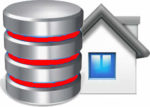Visually Model, Generate and Manage Databases
This book by Michael McLaughlin covers the installation and use of MySQL Workbench, which is software that allows you to easily model and develop MySQL based applications.
The MySQL Workbench book contains 12 chapters and over 450 pages.
Chapter 1 takes you through the steps of how to download and install MySQL Workbench on a variety of operating systems, including Linux/Mac and on a Windows PC. This chapter is really useful and it takes you through each step in turn.
Chapter 2 covers how to create and manage your database connections in order to work with MySQL Workbench.
Chapter 3 covers the basics of data modelling concepts. This is a great chapter for users to learn all about modelling before starting out planning and laying out database models, if they don’t already know the basics.
Chapter 4 gets you to create tables, users, indexes, views and adding foreign keys between tables.
Chapter 5 is a small chapter that quickly tells you all about creating and managing routines, for Oracle users that means MySQL procedures and functions.
Chapter 6 is about reverse engineering current tables, functions, views and procedures etc. These definitions can then be brought into MySQL Workbench for working on and managing.
Chapter 7 begins part 3 of the book and this section is all about SQL development. This chapter is about editing your data, so it covers updates, inserts and selects. MySQL Workbench allows the user to visually see the data and write the SQL commands and store these commands for later use. The final chapter of this section details how to manage and save your SQL scripts.
Part 4 is all about server administration. Chapter 9 is entitled ‘Instances’. In this chapter the reader is shown how to manager and create instances. This means you can learn how to stop and restart databases, view system variables, view error logs etc. Chapter 10 covers adding and editing users and roles.
Chapter 11 deals with imports and exports. So now you can learn how to export and import databases through MySQL Workbench. The final chapter, chapter 12 is all about migrating databases. MySQL Workbench is pretty good, as it allows you to move a SQL Server 2000, 2005, 2008 or 2012 database to a MySQL 5.6 database. MySQL Workbench should also allow you to migrate a Sybase and Postgres database to MySQL as well.
At the rear of the book are three appendices and a glossary section. The three appendices include the answers to the end of chapter questions, how to extend MySQL Workbench by adding in plug-ins. The final appendix demonstrates how to install and configure a database in Microsoft SQL Server 2012 in order to test the MySQL Workbench migration utility.

